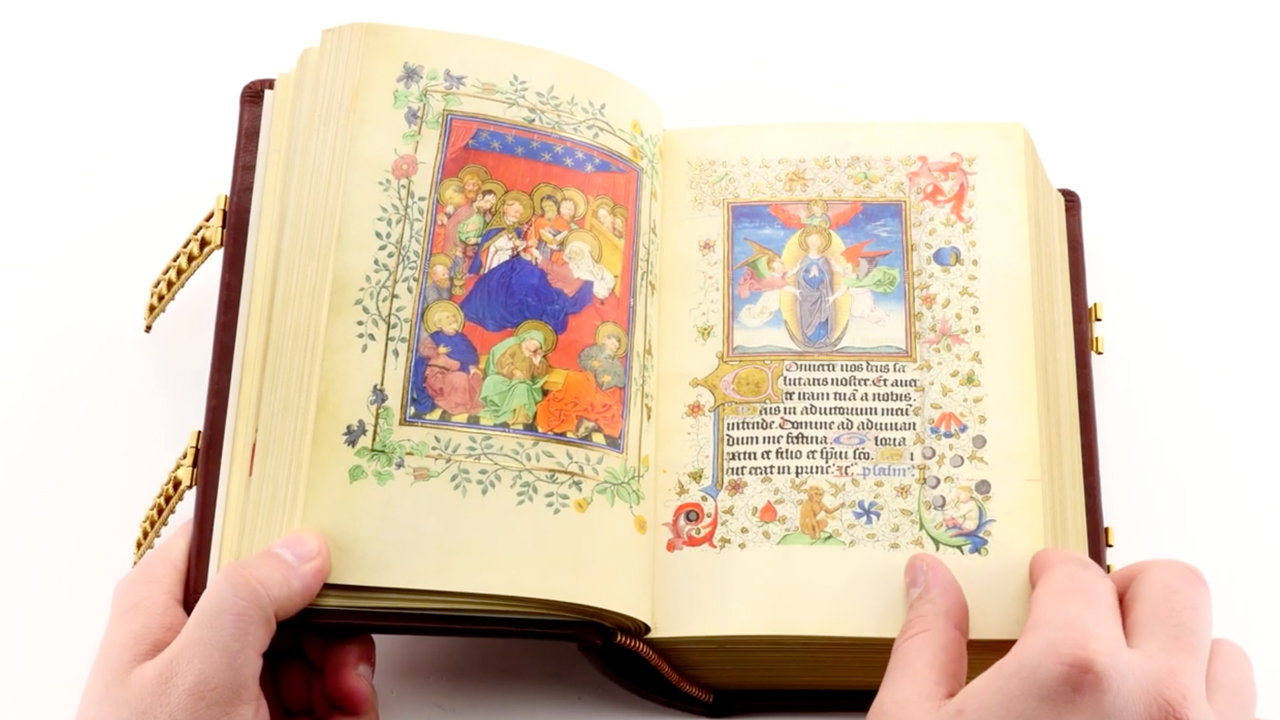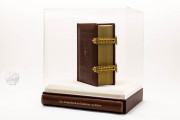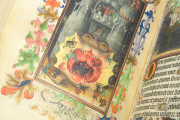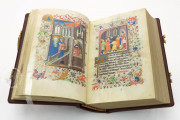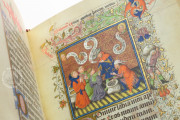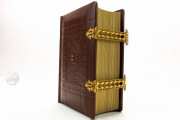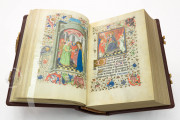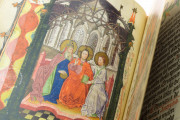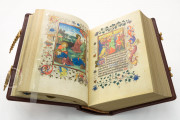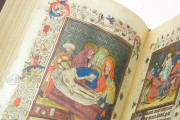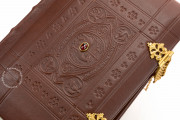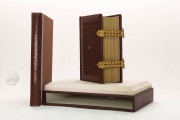The greatest Dutch master of book illumination made this very handy book of hours around 1430. The detailed illustrations of everyday life in the fifteenth century are unique in their form and content.
A Magnificent Book of Hours
Around the year 1430, artists in Utrecht – or perhaps also in Nijmegen – produced a marvellous book of hours for the Duchess of Guelders, a book that both in terms of volume and quality is unmatched even in the later period of book painting.
A grandchild of John the Fearless, Duke of Burgundy, Catherine of Cleves was the addressee for whom the namesake master decorated this manuscript book with 157 miniatures in an extremely handy format.
The Master of Catherine of Cleves
The work’s high quality and enormous iconographic variety lead us to assume that the Master of Catherine of Cleves must have been familiar with the art of the van Eyck brothers and with French illumination of his own day.
On the other hand, he developed his own unmistakeable style which was to influence illuminators after him, not only in the Netherlands. Neither Willem Vrelant nor the Master of Mary of Burgundy are conceivable without this greatest of all Dutch book painters.
A book like a picture gallery 157 half- and full-page miniatures with opulent frames make the Hours of Catherine of Cleves the largest coherent picture gallery of Dutch art from the fifteenth century.
Many of these pictures are not only extraordinary in terms of form and content but also unique in the truest meaning of the word: nowhere else in late medieval art do we find parallels or correspondences to this work.
Some of the impressive depictions, such as Purgatory and Hell, anticipate themes from the works of Hieronymus Bosch. And we even discover elements that hint at Dutch genre painting of later centuries.
Images of Everyday Life in the Fifteenth Century
The richly detailed and elaborately executed small paintings lead us into the world of the period around 1430. In colors that still glow today we discover the real life and family environment of the people of this time. To achieve his goal, the master used biblical events and scenes from the lives of saints.
However, the pictures were not the only means by which the Master of Catherine of Cleves wished to depict a courtly, bourgeois, and rural environment. He also placed particular emphasis on the space around the miniatures.
The margins of the pages are decorated with coins, mussels and crabs, fighting cockerels, fish, butterflies, flowers, and insects of all kinds. Birds’ cages and fish traps additionally form elaborate frames where we also find images of hunting and fishing, a farmer’s wife milking, or an entire bakery.
The list could be continued infinitely. It must have been a real pleasure for the duchess to discover ever new scenes during her times of prayer.
In fact the margins are like an additional book within the book, lending this book of hours a particular cheerfulness, for instance on the page where St. Bartholomew is framed with fresh pastries and crispy pretzels.
A Wedding Gift of a Particular Kind?
Although we do not know who ordered this lavish book of hours, it may be assumed with quite some certainty that it was written, painted, and illuminated for Catherine of Cleves on the occasion of her marriage with Arnold of Egmont, Duke of Guelders.
Catherine came from a family whose name was uttered in the same breath as the great princely dynasties of Europe. Her mother was Mary of Burgundy, daughter of John the Fearless and wife of Arnold of Cleves.
Catherine was an extremely self-confident woman who – supported by Philip the Good – took over power in Guelders for quite some time in order to put an end to her husband’s mismanagement.
We have 1 facsimile edition of the manuscript "Hours of Catherine of Cleves": Stundenbuch der Katharina von Kleve facsimile edition, published by Faksimile Verlag, 2009
Request Info / Price
